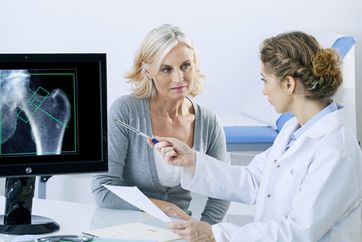Common antibacterial agent may worsen bone health in women
Women exposed to high levels of triclosan, an endocrine-disrupting chemical widely used as an antibacterial in consumer goods and personal care products, are more likely to have lower bone mineral density and evidence of osteoporosis at the intertrochanter when compared with women exposed to lower amounts of the chemical, according to findings published in The Journal of Clinical Endocrinology & Metabolism.

“In our study, we found that triclosan exposure may be a risk factor for lower bone mineral density and osteoporosis,” Yingjun Li, PhD, of Hangzhou Medical College School of Public Health in Hangzhou, China, told Endocrine Today. “However, the causal relationship still needs to be validated.”
Li and colleagues analyzed 2005-2010 National Health and Nutrition Examination Survey data to examine the association (using beta coefficients) between urinary triclosan concentrations with BMD and osteoporosis in 1,848 women, using linear and logistic regression analyses (mean age, 48 years; 72.23% white; 939 premenopausal). Researchers stratified women by tertiles according to triclosan concentration. The weighted percentage of osteoporosis within the cohort was 3.93% at the total femur, 4.82% at the femoral neck, 4.09% at the intertrochanter and 6.36% overall, according to researchers.
After adjustments for multiple variables, including age, race, education level, smoking status, BMI and calcium intake, associations persisted between the third tertile of triclosan concentration and lower BMD at the total femur (beta = –0.016; 95% CI, = –0.032 to –0.000), intertrochanter (beta = –0.022; 95% CI, –0.042 to –0.002), and lumbar spine (beta = –0.014; 95% CI, –0.029 to 0.001), relative to the first tertile of triclosan concentration.

Additionally, compared with women in the first tertile of triclosan exposure, women in the third tertile were more likely to have increased osteoporosis prevalence in the intertrochanter (OR = 2.464; 95% CI, 1.19-5.105), according to researchers. There were no associations observed between triclosan concentration and osteoporosis at the other sites or overall, they wrote.
As Healio.com previously reported, the FDA issued a rule in 2017 banning 19 ingredients, including triclosan and triclocarban, from over-the-counter consumer antiseptic washes, stating there was no scientific evidence that the ingredients were safe for long-term daily use or better than soap and water at preventing illness or the spread of germs.
“This is the first epidemiological study to investigate the association between urinary level of triclosan with BMD and osteoporosis in adult women in the U.S.,” Li said. “We found women with higher levels of triclosan in their urine were more likely to have bone issues. The evidence was stronger in postmenopausal women than in premenopausal women.” – by Regina Schaffer
For more information:
Yingjun Li, PhD, can be reached at Hangzhou Medical College of Public Health, Department of Epidemiology and Health Statistics, 481 Binwen Road, 310053, Hangzhou, China; email: yingjunguqing2006@126.com.
Disclosures: The authors report no relevant financial disclosures.
